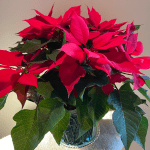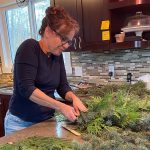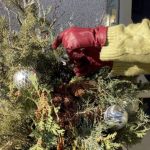There is something incredibly nostalgic about having a real Christmas tree. The scent of pine signals that Christmas is in the air, and the authentic beauty of a real tree rings in the season.
Searching out a Christmas tree at a tree lot is so fun, but going into the woods to cut your very own tree only increases the feeling. We did this for the first time last year, and my boys had so much fun.
A little-known fact is that when a Christmas tree is cut, you don’t kill the tree. Instead, the grower simply takes one of the lowest branches and stakes it in an upright position. Within a few short years, that shoot will become a new Christmas tree. This growth takes a relatively short period of time because the root ball is massive and supports enormous amounts of nutrients to the growing branch.
So the good news is that live Christmas trees regenerate and can easily be recycled!
Lean in as we talk about the unique needs of real Christmas trees. I will share tips on:
- How to Select the Right Christmas Tree
- What a Healthy Real Christmas Tree Looks Like
- How to Store a Real Christmas Tree Until You’re Ready for It
- How to Thaw and Acclimate a Real Christmas Tree to the Indoors
- How to Care for a Live Christmas Tree
- Safety Tips for Live Christmas Trees
How to Select the Right Christmas Tree

Nothing kills a holiday mood more than having the wrong tree. It could end up being the incorrect size or not healthy enough to last through the season. Here are some tips on how to get the appropriate tree for your unique needs.
Know Where You Want to Put Your Christmas Tree

You will find yourself wondering how you ever thought a real tree was a good idea if you end up taking your new tree in and out of the house multiple times to ‘adjust’ it with a saw when you thought you bought the right one.
So, before you head out to a Christmas tree farm or lot, know your specs.
- Determine where you would like to place your Christmas tree in your home.
- Check that your spot has enough space for your tree to spread out its branches after it is unbundled.
- Then, take careful measurements.
- You know; measure twice, cut once. Carefully measure your space’s maximum height and width to identify what size of Christmas tree it can accommodate.
The Features of a Healthy Christmas Tree

Hydration level determines the life span of a real Christmas tree. Frozen trees stay fresh longer (See, there are advantages to the great, white north!) A dry tree will drop its needles and turn brown quickly> So fast, in fact, that it may not make it to Christmas.
A freshly cut, well hydrated Christmas tree should have the following characteristics:
- A healthy green color & fragrance – both indicate that it has maintained its water content. Dry trees will have a pale colour, and they won’t be fragrant. That being said, frozen trees don’t have much smell; the fragrance is more potent as they thaw.
- Strong, upright branches – weak, wilted branches indicate dehydration; choose trees with branches that solidly hold their shape.
- The needles stay put when you pass your hand lightly down a branch and when you gently tap the tree stump. Some inner needles may slough off, but that’s part of their natural cycle. An indicator of a dry tree is the needles falling off the ends of the outer branches with either of these tests.
- The needles are pliable, and they don’t snap when you lightly bend them. Brittle needles are indicative of dehydration.
- The tree stump is at least 8-10 inches (20-25 cm) long. This length is needed to give you wiggle room for trimming later on.
- The tree is insect-free. Be sure to check the undersides of the branches for any bugs.
What types of evergreen trees work well as Christmas trees?
Scotch Pine, White Pine, and Balsam Fir are our area’s most popular and best performing Christmas trees.
How to Care for a Live Christmas Tree
Christmas trees can last from 3 to 5 weeks as long as they are well cared for.
But it’s not complicated.
Let’s cover the bases on how to store, thaw, and keep real Christmas trees hydrated.
How to Store a Live Christmas Tree Until You’re Ready for It
Store your live Christmas tree outdoors until you are ready to decorate it.
It’s okay for the tree to stay frozen until then, but keep it sheltered and out of the sun and the wind. A frozen tree will not need any water.
If you are storing your live Christmas tree somewhere above freezing temperatures, keep it out of the sun and wind.
Also, keep it bundled and wrapped, and place it in a bucket of clear, fresh water to rehydrate as it thaws.
How to Thaw a Frozen Christmas Tree
When you are ready to thaw your live Christmas tree, plan ahead and stay patient with the process.
- The first thing to do before bringing your tree indoors is to check that your Christmas tree stand is the right one for your tree. The guideline is 1 litre of water per inch (2.5 cm) of stem diameter per day. A tree with a 4 inch (10 cm) stem diameter will need 4 litres of water each day.
- Allow your real Christmas tree to thaw slowly and gently. Give your tree at least 24 hours to acclimate to its new surroundings. If your Christmas tree is wrapped or bundled, leave it wrapped for the moment.
- Give the Christmas tree stump a clean, fresh cut once it has thawed. Make a new, clean cut off the stump with a saw, taking 1/2-1 inch (2-3 cm) off the base. This cut will open the pores that have been sealed by solidified pitch or sap.
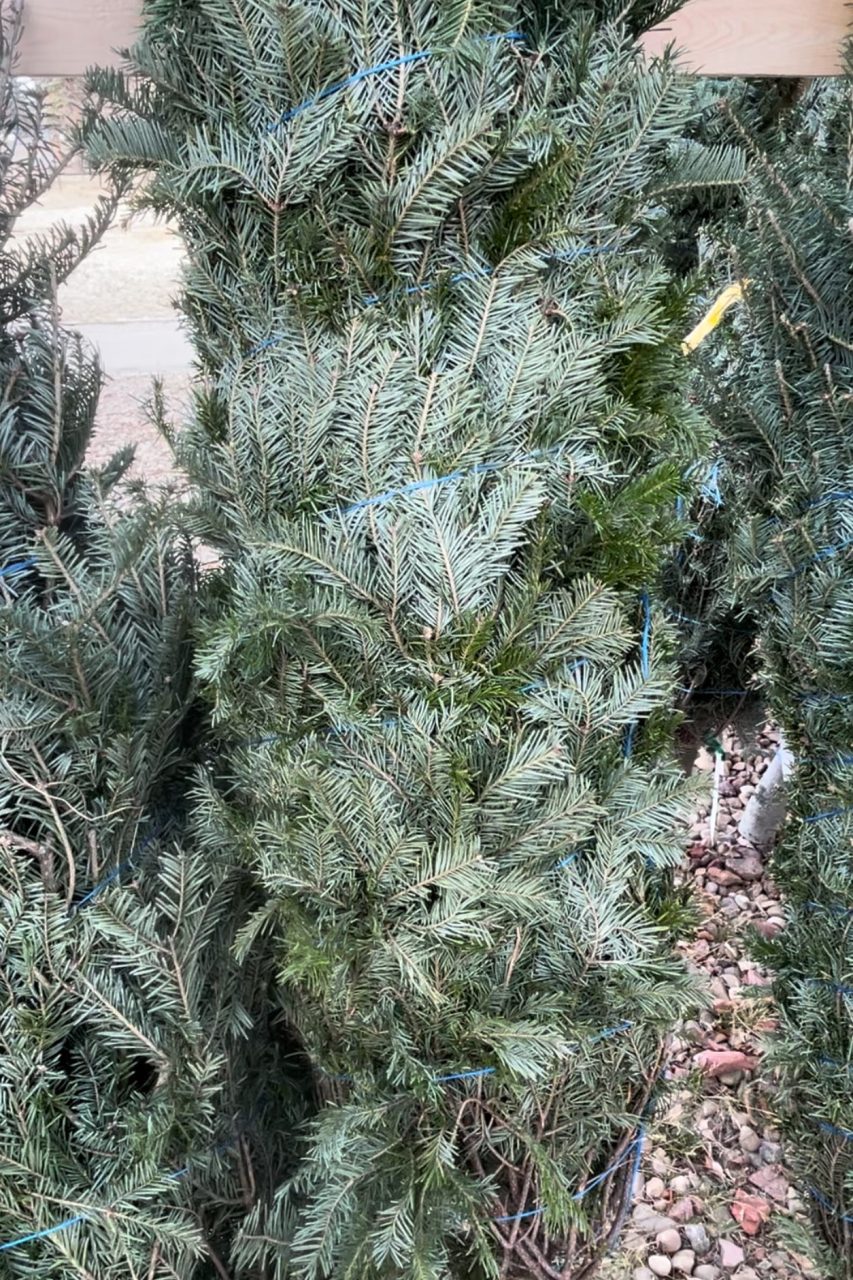
- Place the newly cut bottom in a bucket of water that holds at least 4 litres or 1 gallon of water. It will drink a lot of water at first as the tree rehydrates. Check the water level twice daily for the first few days.
- Water, water, water. Use clean, fresh water to hydrate a live Christmas tree. People often wonder if they need to add any nutrients to the water to get the tree to last longer, but there has been no definitive research showing that anything added to the water will extend the life of a live Christmas tree. Just go clear — clean water works best to hydrate live Christmas trees.
- Unwrap the tree Christmas tree. Avoid pulling at the frozen Christmas tree branches as it is thawing. Trying to fluff or expand the branches could cause them to snap. Let the branches open slowly on their own.
How to Keep a Live Christmas Tree Hydrated
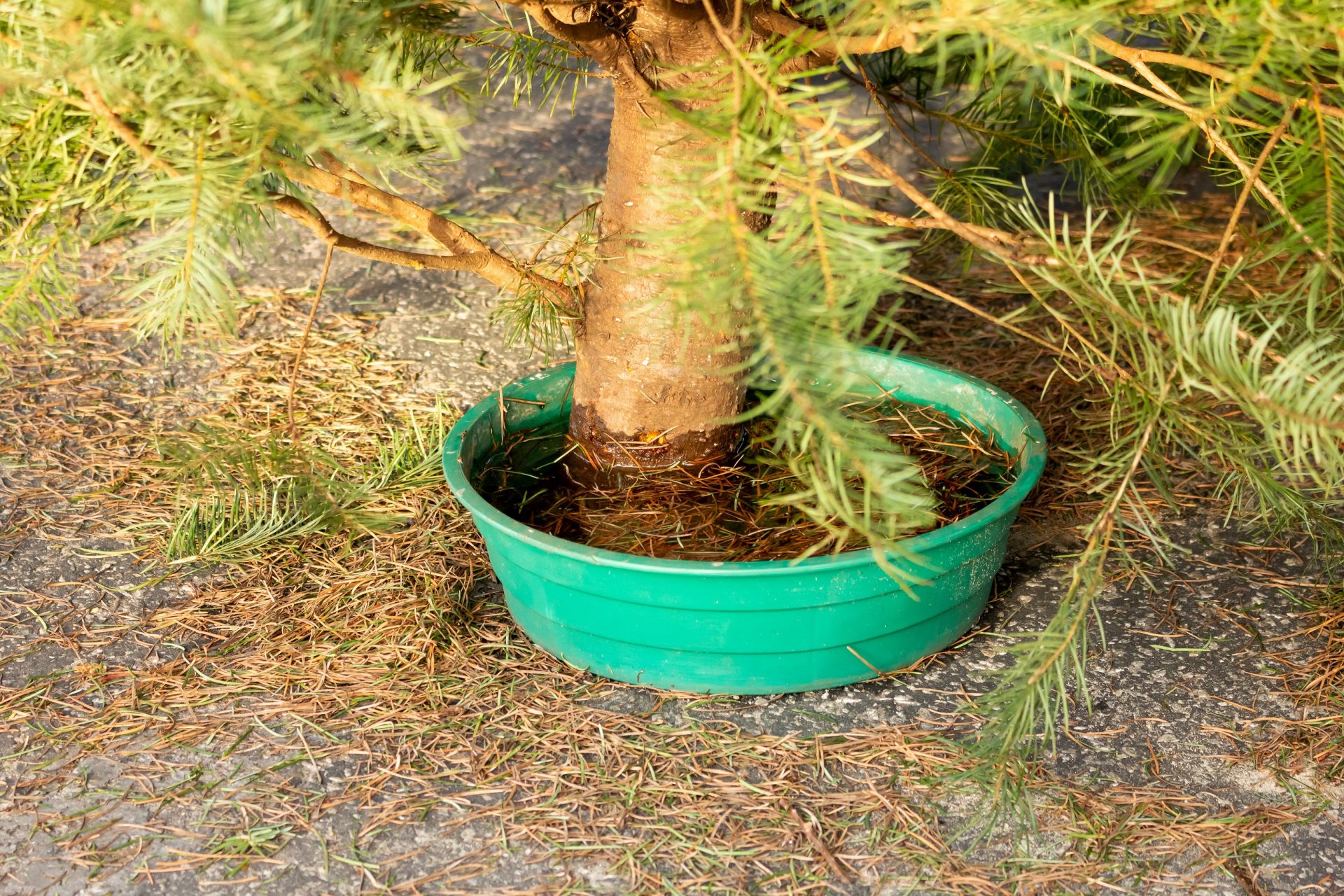
Keeping a live Christmas tree hydrated is THE secret to its longevity. Here are more details on how to keep your live Christmas tree fresh and green.
- Check the Christmas tree stand water level daily. Bringing a tree indoors breaks its dormancy, and it will be thirsty.
- As mentioned earlier, check the water level twice daily for the first few days and then daily. If you’re anything like me, new routines take a bit to settle in. I usually set an alarm on my phone to remind me to check the water level.
- Maintain the water level above the stump cut line. If the water level sinks below the cut line, the stump pores will seal again, and you will need to recut that stump – and you so don’t want that to happen!
- Keep your Christmas tree cool and out of the heat. It’s possible to dry out your tree without even realizing it. Fireplaces, heat registers, wood stoves, and baseboard heaters are all warm, dry air sources. This air movement will surreptitiously desiccate a tree without notice. Place the Christmas tree a reasonable distance from these sources of heat.
- Too much sun exposure next to a south-facing window can also place more stress on a Christmas tree than we realize.
- An anti-transpirant spray may help extend the life of your tree by decreasing the moisture loss through the branches and needles.
- LED Christmas lights help preserve live Christmas trees. LED lights stay cool and won’t cause the tree needles to dry out.
Safety Tips for Real Christmas Trees
The possibility of your live Christmas tree going up in flames is a true and present danger. Here are some tips to keep your tree safe:
- Never use real candles with live Christmas trees, or artificial Christmas trees, for that matter.
- Use non-flammable Christmas decorations.
- Use LED lights with real Christmas trees – LED lights stay cool and don’t warm up like incandescent lights.
- Remember to turn off your Christmas lights when you are out of your house or sleeping; consider putting them on a timer. Not only does this make it safer, but it also reduces electricity consumption and saves the hassle of turning the lights on and off.
Recycle Your Live Christmas Tree
What to do with a dog-eared Christmas tree? There are several things that you can do with it.
You could keep your old Christmas tree outdoors in your garden for bird and insect habitat during the winter months, cut up your weathered Christmas tree for bonfires on warm winter evenings, or recycle it. Many communities have Christmas tree recycling programs.
Looking for More Ways to Keep Christmas Fresh?
Poinsettias are another live and nostalgic decoration for the Christmas season. Check out my blog called How to Care for Your Poinsettia in 3 Simple Steps. Who doesn’t love a live Christmas greens with the beautiful colours and fragrance? You can read more on my blog How to Select, Use, and Care for live Christmas Greenery!
And for fresh gardening information each month, sign up for my monthly newsletter called “Fresh Pollen” here.
©Sharon Wallish Murphy ©Gardening with Sharon




